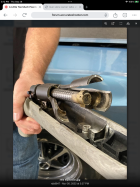ImBIllT
Silver $$ Contributor
They’re not “measured” in different ways, but people write stupid articles every day. They have actual different specifications. Other than the throat, the differences are fairly negligible. The specs for 5.56 NATO are such that you could make a load that was within pressure spec when fired in a 5.56 NATO chamber that would greatly exceed that pressure if fired in a 223Rem chamber. Would that be dangerous? I lean toward “no”, but would not be willing to advise internet users to take my word for it. Would all 5.56 NATO ammo result in such a situation? Absolutely not.We
Well, if you go to the links I provided earlier in this post you'll find that the differences between 5.56 and.223 ammo are that they are measured in different ways. Some of the store bought 5.56 needed to be re-seated to chamber properly. I chronographed both and found no real differences. Some brands were on the high side and others were on the low side.
When I make reloads for this rifle I use Quickload under 5.56 ammo. My rifle does just fine with my reloads in both my bolt rifle and my AR.
So, in conclusion, I am convinced that myth of shooting 5.56 ammo in a rifle chambered in .223 is dangerous is just that, a myth.
If you seated the bullets deeper, then you changed the ammo toward 223 Rem from 5.56 NATO in the very way that has the greatest cause for problems with firing 5.56 NATO ammo in a 223 chamber.
I don’t think you “cheated death”, but there is a difference between 5.56 NATO and 223Rem, and while it’s perfectly fine to shoot 223Rem in a 5.56 NATO chamber, the opposite is potentially problematic, and you yourself had to seat the bullets deeper to chamber them, or at least to chamber them easily.











